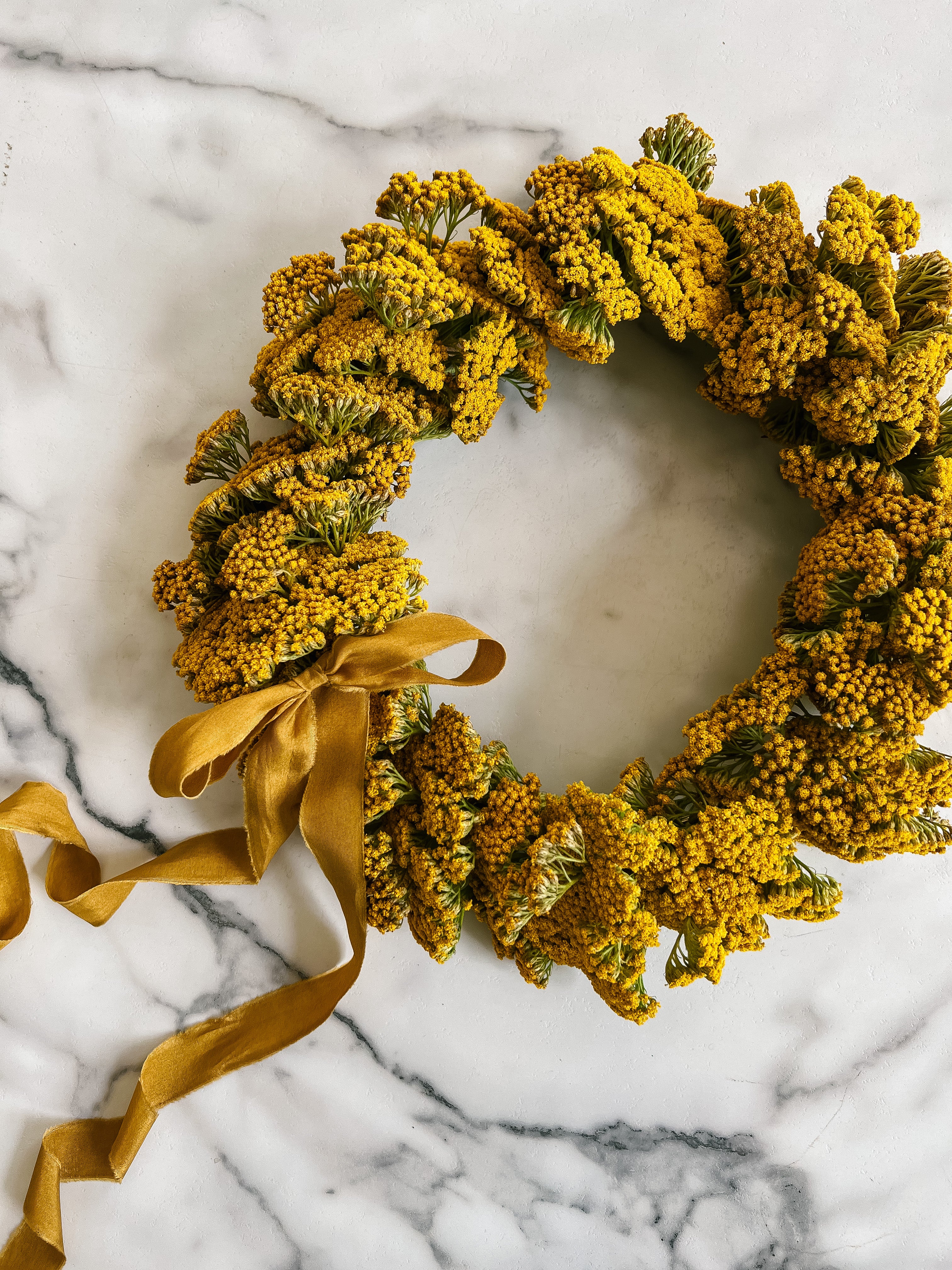Welcome to our new journal segment called “Flower Feature” where we share knowledge about one specific variety of flower and its different applications in floral design, use throughout the world, history, and its meaning in the language of flowers.
Today, we’re talking about Yarrow!
Yarrow, also known as Achillea Millefolium, is a flowering plant that has been used for medicinal and decorative purposes for centuries. Other common names for Yarrow are old man's pepper, devil's nettle, sanguinary, milfoil, soldier's woundwort, and thousand seal. The plant is native to Europe and Asia, but can now be found in many parts of the world, including Manitoba!

In the language of flowers, the yarrow flower shares twin meanings of healing and love. This makes yarrow the perfect “get well soon” gift for a loved one. Yarrow’s symbolic meaning is traditionally associated with healing which originates from Ancient Greek mythology. Yarrow also developed into a symbol of youthful love. Numerous European cultures where the plant is native independently involved the herb in various rituals of courtship. For example, in England and Ireland young girls would put a leaf of the plant in one nostril. If they experienced a nose bleed while reciting a rhyme about true love, it would mean that their love was true. (We prefer healthy conversation, but you do you!)
Want to learn more about Floriography and the language of flowers? Check out this handy set of educational and beautiful floral cards.
One of the most interesting things about yarrow is its historical use. In ancient times, yarrow was believed to have magical properties and was used to ward off evil spirits. It was also used in traditional medicine to treat a range of ailments, from headaches to wounds.

Yarrow's Latin name, Achillea Millefolium, is derived from the legendary Greek warrior, Achilles, who used the herb to treat wounded soldiers in battle. According to herbal lore, the centaur Chiron taught Achilles how to use the plant, which was said to have grown from the rust on his spear. Interestingly, Yarrow has been discovered in a Neanderthal burial ground, among other medicinal plants, indicating its use in ancient times. We love learning about flowers and their history, if you do too, check out The Story of Flowers.
In modern times, yarrow is still used for its medicinal properties. It is believed to have anti-inflammatory, antispasmodic, and astringent properties, and is often used to treat digestive issues and menstrual cramps. In addition to its medicinal uses, yarrow is also used in cosmetics and skincare products. Its astringent properties make it a popular ingredient in toners and facial cleansers. This doesn’t mean you can buy yarrow from a local florist and ingest it or apply it topically! All plant medicine applications should be checked with your doctor first.

From a floral design perspective, yarrow is a versatile and beautiful flower that can be used in a variety of arrangements and bouquets. Yarrow originally grew only in white and yellow varieties, but careful plant breeding has resulted in a far wider range of colors. Common Yarrow is now available in colors like pink, magenta, salmon, red, gold, and yellow. The variety that is available to us year-round is a bright, mustard yellow, and happens to be our favourite. It can also be dried and preserved beautifully, keeping its colour. Interested in drying yarrow? More info can be found in this book!
Yarrow is a favourite here at the shop, due to its longevity, colour, and overall beauty. We’ve used it to make arrangements, bouquets, wreaths, and to decorate our own spaces. If you’re looking for yarrow to send to someone (or to gift to yourself), or want us to include it in a mixed bouquet, give us a call to place your order.

